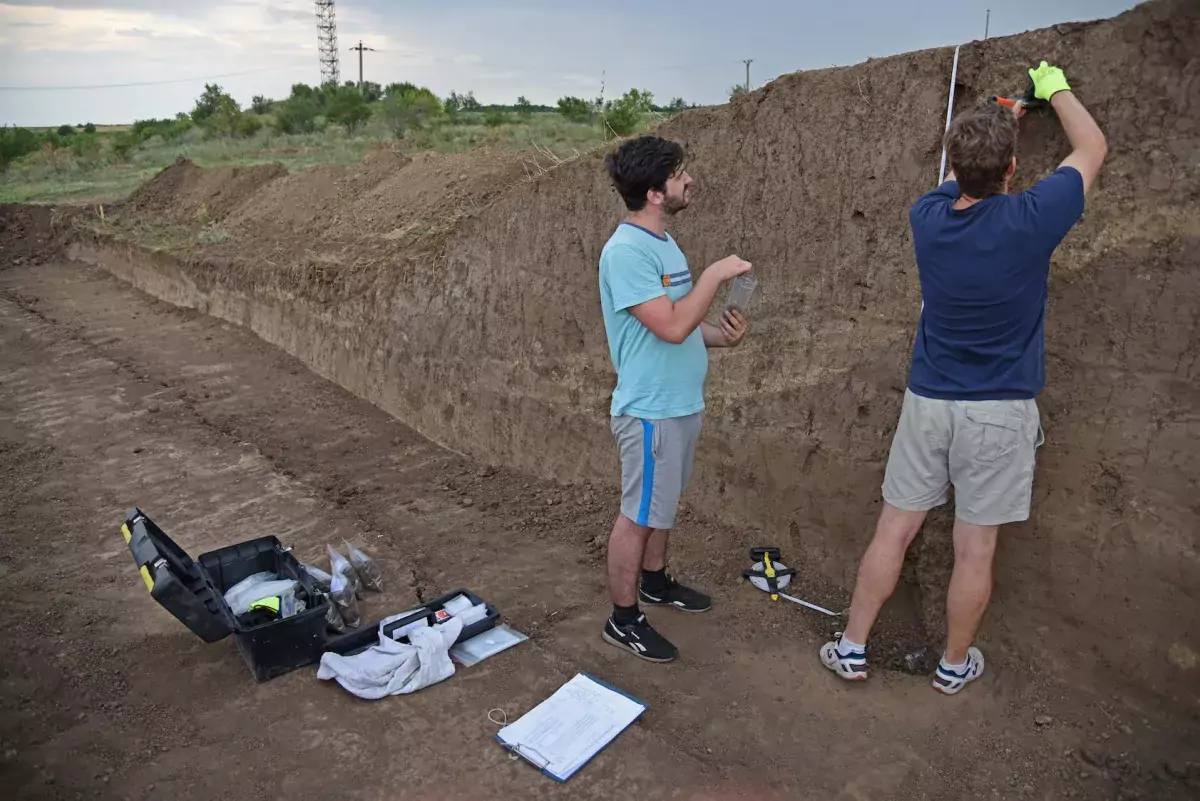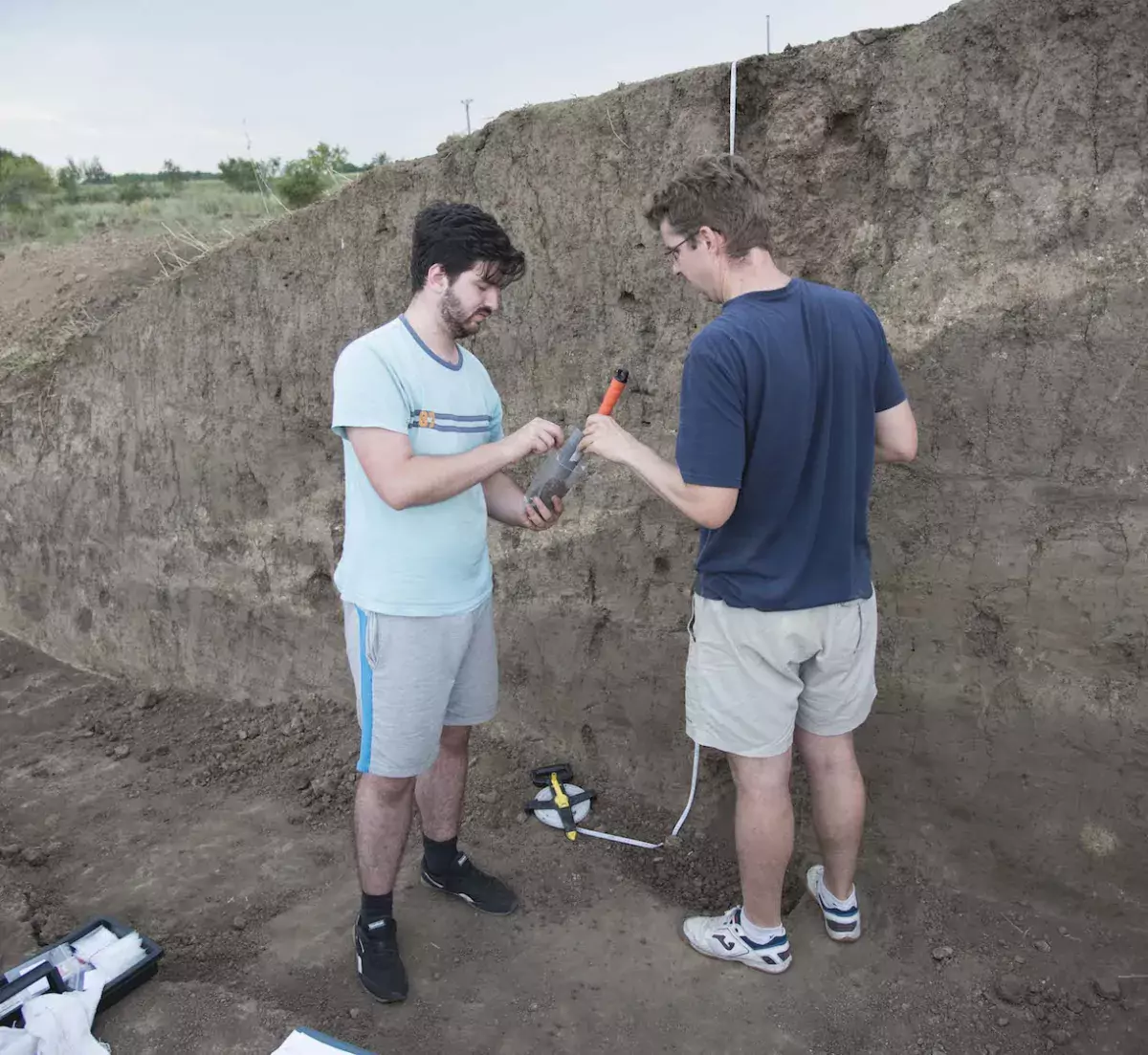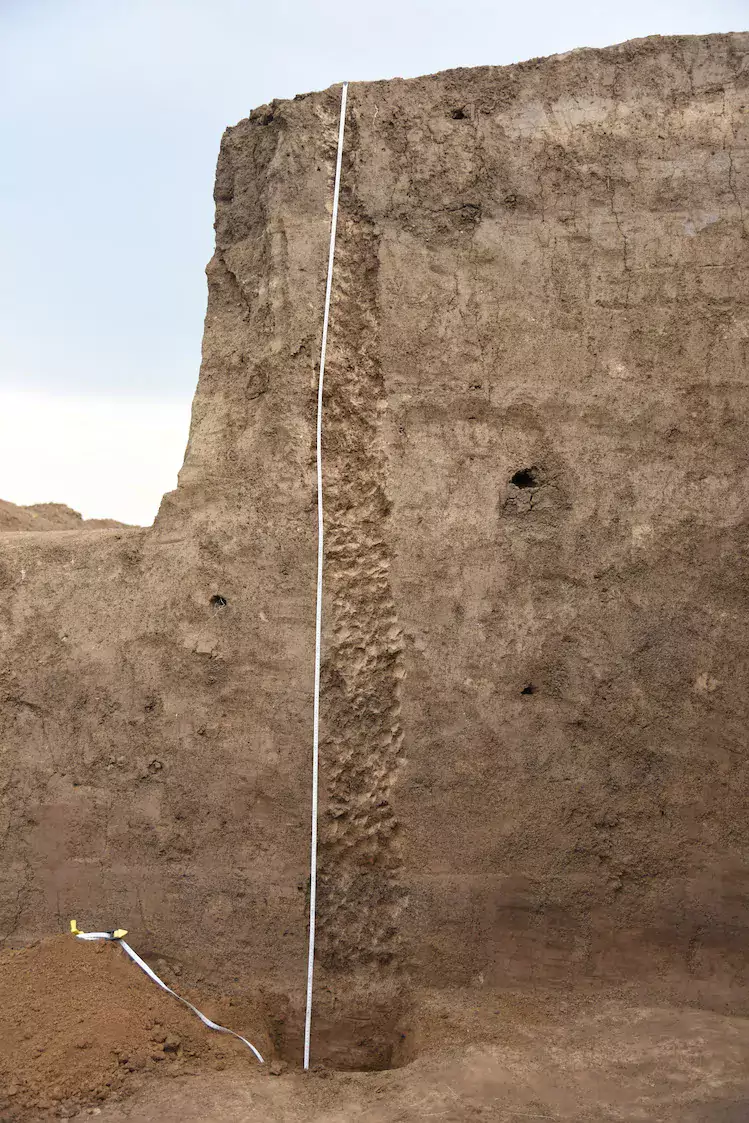Burial mounds of the Eurasian steppe zone are not only part of our common cultural heritage, but they hold a lot of significant environmental information on the ancient natural environment. By covering the soil and erecting the mound, the original soil got sealed from environmental forces (e.g. soil forming factors). The original soil was not exposed to diagenetic changes anymore. Burial mounds can be considered as 'time capsules' – environmental records from the past. From the buried soil and the soil material of the mound body we can take a glance at the environment in which the Yamnaya people lived in. Our work aims to understand the underlying environmental factors that led the Yamnaya people to migrate, and in general to get a picture of the kind of environment they lived in.
The chemical reactions following diagenesis can change and can even stop after the burial mound was erected. The direction and speed of the reactions are dependent on environmental factors such as temperature and humidity. So, the measurement of elemental concentrations and their ratios can help to understand the local historical environmental changes. For example, the chemical alteration index reflects the ratio of primary and secondary minerals, and can be used es a humidity indicator. The barium/strontium ratio can be used to assess the extent of weathering. Or the sodium-oxide/aluminium-oxide ratio reflect the behaviour of water-soluble salt, indicating water movement in the mound. By the analysis of trace metals and rare earth elements and the use of multivariate statistical methods the effects of the soil forming factors can be reconstructed.
In the summer of 2019 we took soil samples from two profiles from the excavated Yamnaya burial mound at the outskirts of Boldeşti-Grădiştea, Romania. On site we described the physical soil types and measured the magnetic susceptibility along the profiles. This was done to identify and separate soil horizons and anthropogenic layers within the mound body. In order to investigate what processes lead to the formation of the soils we took samples from the profiles at 5 cm intervals. We also took reference background samples from a field near the burial mound with an auger soil sampler. Through the pedological and geochemical analysis of these profiles we will be able to see what kind of soil was used to build the mound and what environmental processes occurred since the burial.


